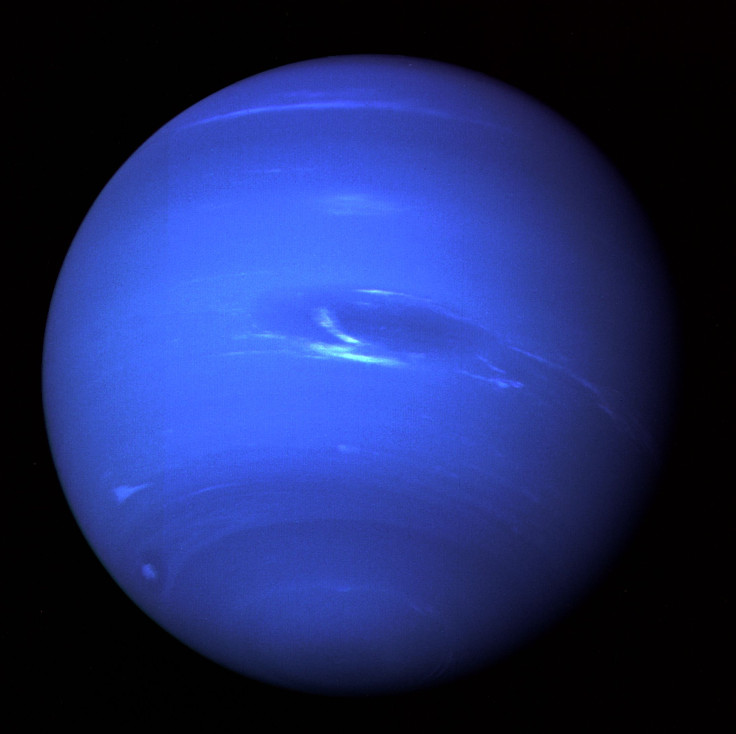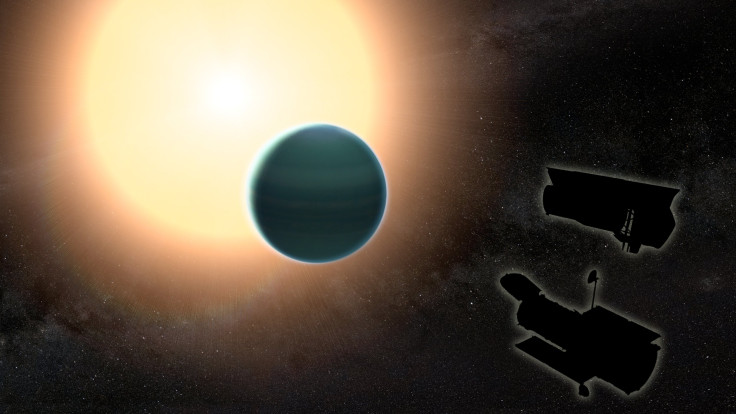‘Warm Neptune’ Exoplanet Has Water, Primitive Atmosphere Of Hydrogen, Helium

Not much is known about exoplanets that are smaller than Jupiter, because of how far they are and their relatively small sizes. However, a study published Friday describes the presence of water and a primitive atmosphere around the exoplanet HAT-P-26b, which is similar in size to Neptune and 430 light-years away from Earth.
The orbit of HAT-P-26b is closer to its star than Neptune’s is to the sun, and the exoplanet is therefore referred to as a “warm Neptune.” Using the Hubble and Spitzer space telescopes, an international team of researchers found a strong water signature in the exoplanet’s atmosphere, which itself is primitive in nature — it is made up almost entirely of hydrogen and helium, the two lightest elements. The sky around the planet is relatively cloudless.
Read: Exoplanets In TRAPPIST-1 System Have Orbits In Musical Harmony
The properties of the warm Neptune’s atmosphere were deduced by looking at data from the exoplanet’s transits across its host star. When a planet passes in front of its host star, as seen from the point of view of a space telescope, the planet’s atmosphere absorbs some wavelengths of starlight and lets others pass.
Since different elements absorb different wavelengths of light, by analyzing the change in the starlight during the transits, scientists can figure out the chemical composition of the planet’s atmosphere.
In the case of HAT-P-26b, the researchers looked at four transits measured by Hubble and two seen by Spitzer.
The study, published in the journal Science, was jointly led by Hannah Wakeford from NASA’s Goddard Space Flight Center in Greenbelt, Maryland, and David Sing, a professor from the University of Exeter in the United Kingdom.

In a statement Thursday on the university’s website, Sing said: “This exciting new discovery shows that there is a lot more diversity in the atmospheres of these exoplanets than we have previously thought. This ‘Warm Neptune’ is a much smaller planet than those we have been able to characterize in depth, so this new discovery about its atmosphere feels like a big breakthrough in our pursuit to learn more about how solar systems are formed, and how it compares to our own.”
And for comparing HAT-P-26b, Neptune and Uranus from our solar system are both good candidates, because all three have similar masses. Compared to the two ice giants, the exoplanet formed either closer to its host star or later in the development of its solar system, or both, according to a NASA statement.
Another aspect the researchers looked at was the metallicity of the exoplanet, a measure of the presence of all elements heavier than hydrogen and helium, because it provides an insight into how a planet formed. The sun is used as a reference point, and for context, Jupiter has a metallicity of between two and five times of the sun, while Saturn is about 10 times the solar metallicity.
Neptune and Uranus, which are smaller than the gas giants, are richer in heavier elements and have metallicities about 100 times that of the sun.
Read: Volcanoes Could Make Exoplanets More Habitable
Based on our solar system, as well as analysis of some other exoplanets, scientists identified a trend in which metallicities are lower for bigger planets. But HAT-P-26b, which was discovered in 2010, doesn’t follow that trend, with a metallicity of just about 4.8 times that of the sun, closer to Jupiter than to Neptune.
NASA’s Wakeford said in the statement: “Astronomers have just begun to investigate the atmospheres of these distant Neptune-mass planets, and almost right away, we found an example that goes against the trend in our solar system. This kind of unexpected result is why I really love exploring the atmospheres of alien planets.”
The study, titled “HAT-P-26b: A Neptune-mass exoplanet with a well-constrained heavy element abundance,” is also the best measurement yet of water on an exoplanet of this size.
© Copyright IBTimes 2024. All rights reserved.





















